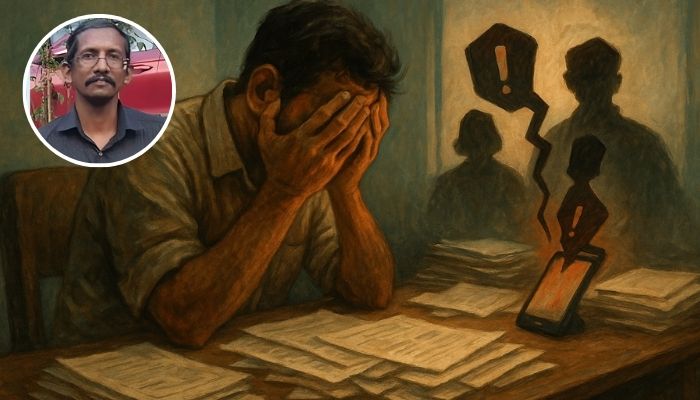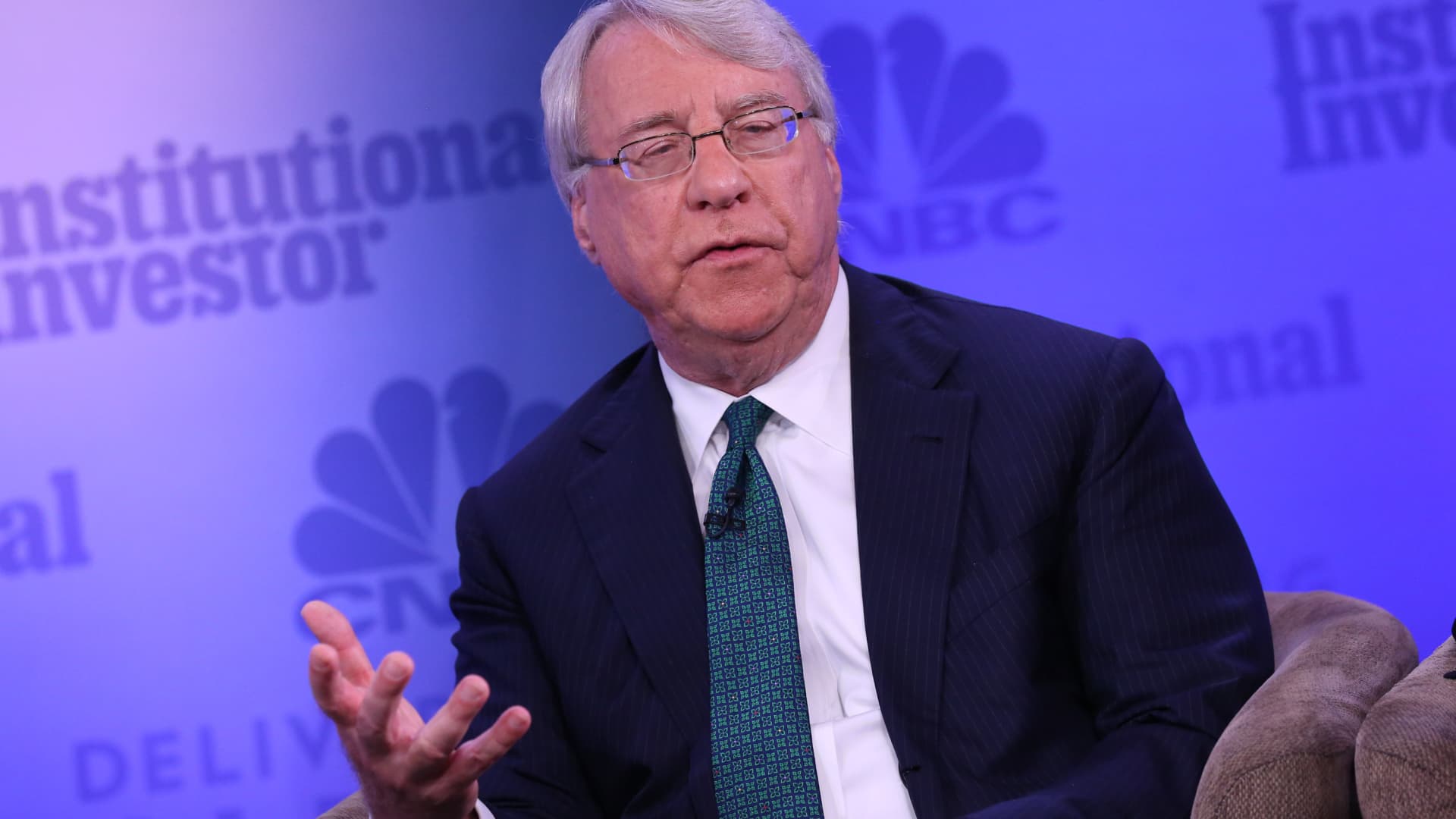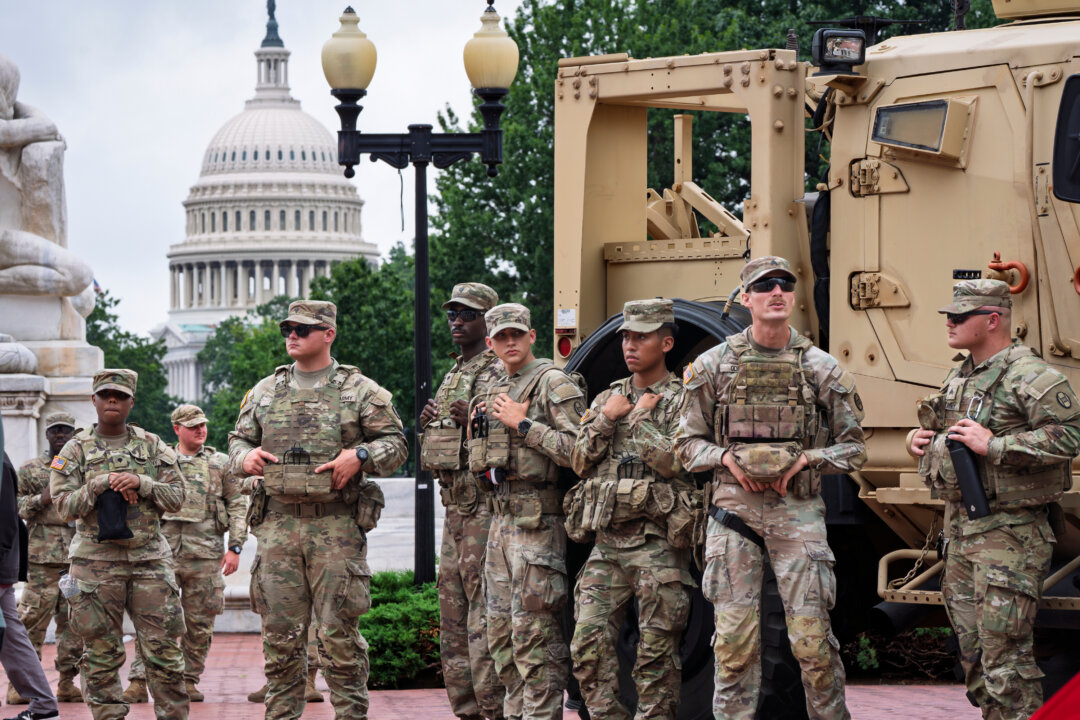Bloomberg whitewashes crimes of Khalistani terrorists Gurpatwant Singh Pannun and Hardeep Singh Nijjar, blames India for transnational crimes
On 6th November, Bloomberg published an elaborate article and a documentary accusing India of orchestrating transnational assassinations of Khalistani terrorists, who were presented as “activists”. In its almost 30-minute-long production and extensive feature titled “Finish Him, Brother”, the publication presented what it called an “inside story” of so-called Indian intelligence plots against separatist individuals including Hardeep Singh Nijjar, Gurpatwant Singh Pannun and Avtar Singh Khanda. The details provided in the article and documentary relied heavily on statements from US and Canadian intelligence, law enforcement agencies, Pannun and pro-Khalistani elements close to Nijjar. Bloomberg weaved a cinematic narrative of phone calls, WhatsApp chats and undercover operations to blame India for killing Nijjar and Khanda and plotting to kill Pannun. It sounded dramatic and may sound convincing to those who are not aware of who these people are and how India operates when it comes to dealing with such terror elements abroad. The story by Bloomberg, however, conveniently missed India’s side. While the story cites anonymous “sources familiar with the matter”, it made no attempt to verify whether these sweeping allegations had any factual basis or whether the Western governments themselves have any motive to shift attention from their own failure to curb radical extremism on their soil. Interestingly, despite the availability of enough proof against Pannun, Bloomberg was fine with taking his byte to support the narrative against India. The Indian government has categorically denied involvement in any criminal activities on foreign land. The Ministry of External Affairs has repeatedly clarified that no arm of the Indian state, no diplomat, and no intelligence operative has ever been authorised to carry out extrajudicial acts in foreign countries. Yet, Bloomberg’s narrative showed the denial as more of a footnote, something that has been mentioned only as a formality. It conveniently ignored that these allegations emerged from the same nations that have long harboured individuals openly calling for the creation of Khalistan by breaking India, which may result in bloodshed. Any genuine publication would question why men designated as terrorists by India were allowed to operate freely in Canada and the United States, but Bloomberg chose to present them as victims of a “vengeful” Indian state. There should have been a serious inquiry into the double standards of Western nations, but it was turned into a scripted morality play where India was the villain and violent separatists were shown as misunderstood “activists”. In fact, Bloomberg completely ignored asking the Five Eyes nations why they were taping communications of Indian government officials and passing information to each other if the storyline is true. Selective storytelling – how Bloomberg presented only one version The most striking flaw in the reportage lies not in what was presented but in what was skipped. The article painstakingly reconstructed the so-called chain of events including intercepted messages and diplomatic tensions. However, it was done completely based on the Western intelligence ecosystem. Every claim of conspiracy heavily relied upon leaks, “assessments” and “people familiar with the situation”. There was no independent verification, no alternative perspective, and certainly no reference to India’s own investigations, statements or dossiers. Bloomberg portrayed Hardeep Singh Nijjar and Gurpatwant Singh Pannun as “campaigners for Khalistan”. Both have been officially designated terrorists under India’s Unlawful Activities (Prevention) Act. Indian agencies have collected voluminous evidence over the years against them. Still, Bloomberg never once mentioned the chargesheets filed by the National Investigation Agency or the Red Corner Notice issued through Interpol, or the multiple FIRs linking Nijjar to violent acts in India. The publication only vaguely named the Khalistan Tiger Force, showing as if the allegations that Nijjar was heading the terrorist outfit were baseless. Not to forget, Nijjar was granted citizenship in Canada despite a Red Corner Notice issued against him. The report leaned on emotional storytelling and described daily routines, greying beards and morning coffee stops. Bloomberg carefully humanised Pannun and Nijjar without mentioning their history of violent incitement. In reality, what Bloomberg did was not an investigation but an image rehabilitation of designated terrorists, something Western media is expert in. The reportage sought to transform figures accused of terror into symbols of dissent. Funny thing is, only a few years ago, Pannun had no beard which basically goes against Sikh culture, but Bloomberg portrayed him as a devote Sikh. Source: Caravan/NPR Even when Bloomberg referred to India’s designation of Nijjar and Pannun as terrorists, it did so with a tone of disbelie



On 6th November, Bloomberg published an elaborate article and a documentary accusing India of orchestrating transnational assassinations of Khalistani terrorists, who were presented as “activists”. In its almost 30-minute-long production and extensive feature titled “Finish Him, Brother”, the publication presented what it called an “inside story” of so-called Indian intelligence plots against separatist individuals including Hardeep Singh Nijjar, Gurpatwant Singh Pannun and Avtar Singh Khanda.
The details provided in the article and documentary relied heavily on statements from US and Canadian intelligence, law enforcement agencies, Pannun and pro-Khalistani elements close to Nijjar. Bloomberg weaved a cinematic narrative of phone calls, WhatsApp chats and undercover operations to blame India for killing Nijjar and Khanda and plotting to kill Pannun.
It sounded dramatic and may sound convincing to those who are not aware of who these people are and how India operates when it comes to dealing with such terror elements abroad. The story by Bloomberg, however, conveniently missed India’s side. While the story cites anonymous “sources familiar with the matter”, it made no attempt to verify whether these sweeping allegations had any factual basis or whether the Western governments themselves have any motive to shift attention from their own failure to curb radical extremism on their soil. Interestingly, despite the availability of enough proof against Pannun, Bloomberg was fine with taking his byte to support the narrative against India.
The Indian government has categorically denied involvement in any criminal activities on foreign land. The Ministry of External Affairs has repeatedly clarified that no arm of the Indian state, no diplomat, and no intelligence operative has ever been authorised to carry out extrajudicial acts in foreign countries. Yet, Bloomberg’s narrative showed the denial as more of a footnote, something that has been mentioned only as a formality. It conveniently ignored that these allegations emerged from the same nations that have long harboured individuals openly calling for the creation of Khalistan by breaking India, which may result in bloodshed.
Any genuine publication would question why men designated as terrorists by India were allowed to operate freely in Canada and the United States, but Bloomberg chose to present them as victims of a “vengeful” Indian state. There should have been a serious inquiry into the double standards of Western nations, but it was turned into a scripted morality play where India was the villain and violent separatists were shown as misunderstood “activists”. In fact, Bloomberg completely ignored asking the Five Eyes nations why they were taping communications of Indian government officials and passing information to each other if the storyline is true.
Selective storytelling – how Bloomberg presented only one version
The most striking flaw in the reportage lies not in what was presented but in what was skipped. The article painstakingly reconstructed the so-called chain of events including intercepted messages and diplomatic tensions. However, it was done completely based on the Western intelligence ecosystem. Every claim of conspiracy heavily relied upon leaks, “assessments” and “people familiar with the situation”. There was no independent verification, no alternative perspective, and certainly no reference to India’s own investigations, statements or dossiers.
Bloomberg portrayed Hardeep Singh Nijjar and Gurpatwant Singh Pannun as “campaigners for Khalistan”. Both have been officially designated terrorists under India’s Unlawful Activities (Prevention) Act. Indian agencies have collected voluminous evidence over the years against them. Still, Bloomberg never once mentioned the chargesheets filed by the National Investigation Agency or the Red Corner Notice issued through Interpol, or the multiple FIRs linking Nijjar to violent acts in India. The publication only vaguely named the Khalistan Tiger Force, showing as if the allegations that Nijjar was heading the terrorist outfit were baseless. Not to forget, Nijjar was granted citizenship in Canada despite a Red Corner Notice issued against him.
The report leaned on emotional storytelling and described daily routines, greying beards and morning coffee stops. Bloomberg carefully humanised Pannun and Nijjar without mentioning their history of violent incitement. In reality, what Bloomberg did was not an investigation but an image rehabilitation of designated terrorists, something Western media is expert in. The reportage sought to transform figures accused of terror into symbols of dissent. Funny thing is, only a few years ago, Pannun had no beard which basically goes against Sikh culture, but Bloomberg portrayed him as a devote Sikh.
Even when Bloomberg referred to India’s designation of Nijjar and Pannun as terrorists, it did so with a tone of disbelief. The report read, “India regards advocacy for Khalistan as an unacceptable threat to its sovereignty”. It attempted to show that the existence of a secessionist campaign backed by foreign funding was a minor inconvenience rather than an act of national sabotage.
Bloomberg also omitted evidence against Pannun and Nijjar. There was no mention of public videos where Pannun threatened to attack Indian targets, he explicitly called to repeat the 1985 Air India bombing, rallies in Canada where Indira Gandhi’s assassins were openly glorified, and more. None of this appeared relevant enough for Bloomberg’s editors. They chose a convenient narrative that India hunts, while the Khalistanis merely speak.
The result? A story stripped of context. Bloomberg presented a one-sided chronicle where the victims were selectively chosen and the perpetrators of earlier violence were painted in soft tones of activism.
Who Pannun really is – threats, provocation and glorification of terror
For the Western media, Gurpatwant Singh Pannun is an “activist” and a “lawyer defending Sikh rights”. In reality, he is a man who has repeatedly and publicly threatened the sovereignty of India. He is the chief of Sikhs for Justice (SFJ), a group banned under UAPA for its explicit advocacy of Khalistan, a separatist state carved out of Punjab.
Interestingly, Bloomberg claimed that the demand for Khalistan came after Operation Blue Star, the military operation India conducted to weed out Khalistani terrorists from Sikhs’ holiest shrine, the Golden Temple in Amritsar. The publication conveniently forgot to mention that Khalistani terrorist Jarnail Singh Bhindranwale’s top demand was the formation of Khalistan and that even before him, the demand for Khalistan was in Punjab’s air since the mid-1970s.
Coming back to Pannun, his record is not a matter of opinion. He has issued open threats to blow up Air India flights, called upon Indian Sikhs to deface government buildings, to hoist the Khalistani flag on government buildings, to stop Prime Minister Narendra Modi from hoisting flag at the Red Fort on Independence Day, burning and ripping Indian Flag, and to attack Indian missions abroad. He has repeatedly referred to the Indian PM, the EAM, and Indian diplomats as “criminals”, urging Khalistani supporters to “teach them a lesson”. He has sought support from Pakistan, urged separatists in Kashmir and Manipur to join hands for separate nations and more. These are not stray remarks, but they are part of a long pattern of incitement.
From the vandalism of the Indian Consulate in San Francisco to violent demonstrations outside the High Commission in London, SFJ has been at the heart of most anti-India protests abroad. Pannun’s organisation has used social media to glorify terrorists and to provoke Sikh youth to join the cause. He routinely circulates calls for “referendums” on Khalistan, held in Western cities, masquerading as democratic exercises but designed solely to challenge India’s territorial integrity.
Even as his videos surface with direct calls for violence, Western governments continue to shelter him under the garb of “free speech”. Bloomberg’s narrative conveniently leaves out every one of these instances. It does not mention how Pannun’s speeches have been linked to mobs that vandalised Indian properties abroad, or how his supporters celebrate the assassination of Indira Gandhi each year in Canada. Instead, the publication chose to portray him as a lawyer exercising his constitutional rights.
The truth about Hardeep Singh Nijjar – from fake identity to terror camps
Pannun and Nijjar were no different. Nijjar was a part of SFJ holding ground in Canada while Pannun operates from the United States. Nijjar was, without a doubt, the armed face of the Khalistani movement being run by Pannun. However, Bloomberg chose to describe him as a “temple leader” and a “plumber from British Columbia”.
Nijjar went to Canada in 1997 under a false Hindu identity using the name “Ravi Sharma”. His asylum plea was rejected multiple times. However, years later, under unclear circumstances, he managed to obtain Canadian citizenship. It was only revealed after his murder that the Canadian government had granted him citizenship despite India’s repeated requests for extradition.
Nijjar was wanted for several crimes in India including murder, conspiracy, and targeted killings. He was a designated terrorist under UAPA and identified as chief of Khalistan Tiger Force (KTF), which is a banned Khalistani terrorist outfit. KTF is responsible for several terror attacks in Punjab.
There are photographs of Nijjar available in the public domain that show him holding an AK-47 rifle. There are multiple reports that mention he was running a training camp in Canada. He was also accused of plotting targeted killings of Hindu leaders in Punjab. In fact, he also visited Pakistan to meet another Khalistani terrorists. He was on a no-fly list for a long time as well.

India passed the information of Nijjar’s involvement in criminal activities via diplomatic channels and official dossiers to Canada. However, Canada did not care about the concerns raised by India and called them “politically motivated”. In 2019, RCMP detained and questioned Nijjar after pressure from India. However, it reportedly did not find any admissible evidence against him. The publication failed to mention FIRs and the Red Corner Notice. Bloomberg’s editors never thought, why would Interpol issue a “Red Corner Notice” if he was not a criminal?
Bloomberg called Nijjar a campaigner and while doing so, it blurred the line between a religious activist and an armed separatist. It blurred the line between advocacy and terrorism. It legitimised the very extremism that has cost thousands of innocent lives in Punjab.
The missing third man – Avtar Singh Khanda’s mysterious death
While Bloomberg focused largely on Pannun and Nijjar, it casually mentioned another name in passing, Avtar Singh Khanda. For most Western readers, the reference meant little, but for India, Khanda was another key cog in the Khalistani machinery. Based in the United Kingdom, he was believed to be an ideological mentor of Amritpal Singh, the Waris Punjab De leader who triggered violent protests in Punjab in 2023.
Khanda openly endorsed Khalistan Referendum events and frequently posted messages glorifying terrorism, including images of armed separatists and slogans celebrating the 1984 assassins of Indira Gandhi. Indian agencies had flagged his name repeatedly to British authorities, citing his role in radicalising Sikh youth through online propaganda and providing strategic direction to separatist networks.
In May 2023, Khanda died in a Birmingham hospital, officially from acute myeloid leukaemia. There was no evidence of foul play, yet the timing, just weeks before Nijjar’s killing, fuelled a wave of conspiracy theories among Khalistanis. Western media used his death to hint at a pattern of “mysterious eliminations”. What none of them mentioned was that Khanda had for years been under observation by Indian agencies for links with banned outfits and financial irregularities linked to foreign Khalistani organisations.
The curious case of information gathered through intercepting communication of Indian officials
Under the Vienna Convention on Diplomatic Relations (1961), intercepting or taping the communications of foreign diplomats is a clear breach of international law. Article 22 declares that “the premises of the mission shall be inviolable,” meaning the host state may not intrude physically or electronically.
Article 24 extends this inviolability to “the archives and documents of the mission… at any time and wherever they may be.”
Most crucially, Article 27 (1–2) obliges the receiving state to “permit and protect free communication on the part of the mission for all official purposes” and affirms that “the official correspondence of the mission shall be inviolable.”
When Bloomberg mentioned that UK intelligence gathered information from intercepting communications of Indian officials, it admitted that the Five Eyes nations directly contravened these provisions and committed a crime in the eyes of international law. If Western nations deny breaking these rules, then the whole case will fall apart!
Western hypocrisy – free speech for extremists, silence for victims
There is a fundamental hypocrisy at the heart of this Western narrative. The same governments that have waged endless wars on terror, bombed foreign lands in the name of security, and conducted assassinations through drone strikes in Afghanistan, Iraq and Syria, now accuse India of overreach, that too without a shred of verifiable evidence.
When the United States launches a missile in Yemen, it is celebrated as counter-terrorism. When Israel eliminates a Hamas commander abroad, it is hailed as self-defence. But when India raises legitimate concerns about individuals plotting separatism and violence from foreign soil, it is suddenly branded “transnational repression”, followed by allegations of involvement in criminal activities including murder on foreign soil.
It is a fact that the United States and Canada have refused to act on multiple extradition requests for Khalistani operatives wanted in India. Instead, these countries invoke “freedom of speech” to shield men who glorify bloodshed, provoke attacks on Indian missions, and spread hatred online.
Imagine someone in New York or Ottawa openly called for the dismemberment of the United States or Canada, or threatened to bomb their planes, would Bloomberg celebrate that individual or organisation by calling them “activists” and saying they were just speaking under “freedom of speech”? Yet when the target is India, a democracy of 1.4 billion people, such extremism becomes acceptable rhetoric.
The West’s refusal to take responsibility for the ecosystem of extremism thriving on its soil is equally appalling. Khalistani networks in Canada, the US and the UK are not exiled dissidents but organised, well-funded pressure groups influencing elections, controlling gurdwara boards, and funnelling money into radicalisation. Western intelligence agencies have long been aware, but governments choose silence for the sake of vote banks.
Bloomberg’s report mirrors the blindness of Western governments. It treats Western inaction as neutrality and Indian protest as aggression. The real story is not about alleged assassinations. It is about how the West has normalised sheltering extremists who call for India’s dismemberment. India does not seek moral lectures, it seeks reciprocity. No democracy should be expected to tolerate terrorism masquerading as activism.










































































